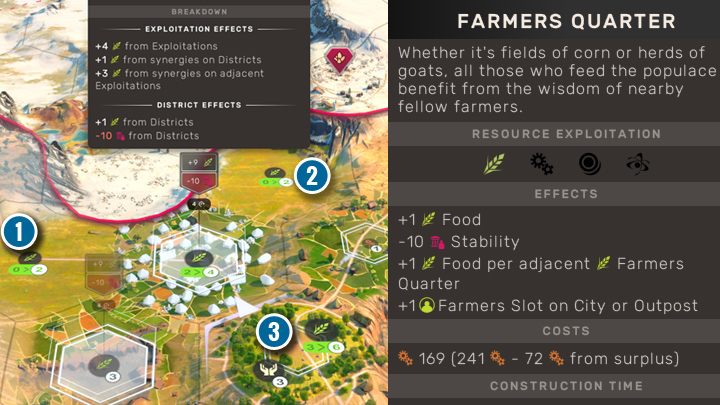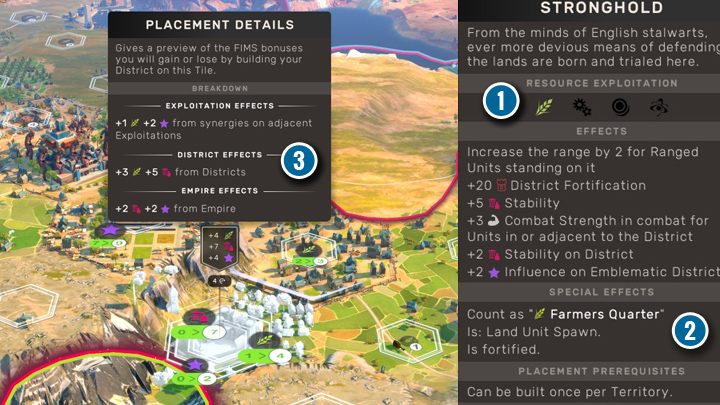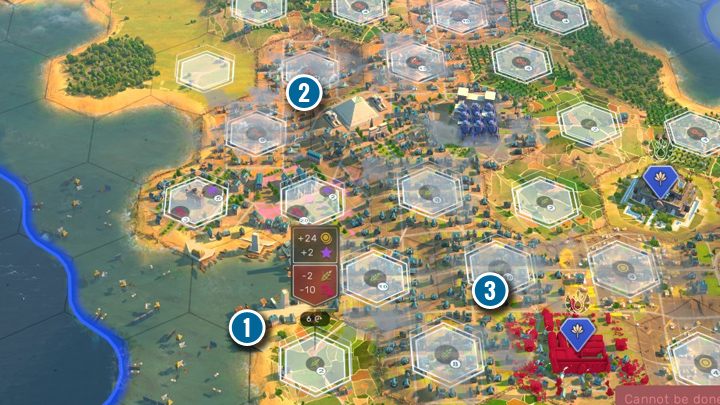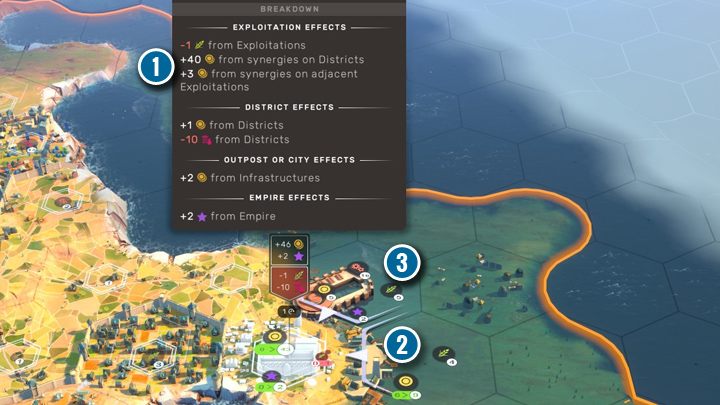Humankind: City Districts
In this part of the Humankind game guide, you will find information about the city districts and emblematic districts.
Last update:
On this page of our Humankind guide you'll find descriptions regarding districts. Here, you'll learn everything you should know about developing your city with new districts or about special emblematic districts.
Cities in Humankind don't develop by increasing their population, adding new territory or upgrading their infrastructure. The main way of obtaining basic resources, such as food, industry, money and science, are districts. Each district collects a specific resource from surrounding tiles and gets neighborhood bonuses from, e.g. other districts. Properly upgrading the districts is mandatory to developing the city.
Most districts provide additional specialist slots and increase the city's max population! Building districts provides additional income from the district and its surroundings, no matter the city's population. Therefore, it's always worthwhile to prioritise building new districts.
- Building districts
- Exploitation of tiles by districts and collecting FIMS resources
- Emblematic districts
Building districts
Each tile of the city is usually a district. Please note that the Main Plaza and the Administrative Center are also considered districts. Some bonuses depend on the number of adjacent districts of any kind. It's therefore very important to think their placement through.

There are several rules in play when building new districts:
- New districts can be built only in the vicinity of the main square, Administrative Center, Hamlet, or an existing district.
- Some districts, such as Garrisons, can be built in any area of our territory, but other ones still need to follow the aforementioned rule.
- You can built new districts on the tiles with already existing ones. The construction cost is the same as when building on an empty tile.
- By default, each district gives -10 Stability in the city.
- Districts connected to the Main Plaza can be surrounded by City Walls.
- If the city stability is below 29%, you can only build districts that add stability.
- All districts can be plundered (even by your own units). When a district is plundered it turns into ruins, which can be replaced with a new district. Destroyed Wonders or emblematic districts from previous eras are forever lost!
- The more districts there are in the city, the more expensive building the next district is. It is worthwhile to expand the cities before connecting them to a different territory, avoiding additional production costs.
- You can only built a single emblematic district from a specific time period in your territory. You can have several emblematic districts in one city, but only if they come from different cultures.
- The districts only collect resources from their own territory. They won't collect from tiles outside your border or those belonging to other cities.
Exploitation of tiles by districts and collecting FIMS resources
Each district brings FIMS income to its city. It doesn't matter whether it's located in the home territory or an annexed region. All income is added to the city's general budget. Each district can be exploited in one or several ways. For example, a farming district can only get food, the Hamlet collects food and industry, while the Train Station profits only off the surrounding industrial districts.

Each tile provides some resources. Better tiles provide several points of resources at once, sometimes even two or three kinds of different resources too. Districts collect resources from adjacent fields. However, if, e.g. a river tile provides food and industry, you'll need to build both a food district and an industrial district next to it to fully exploit it. Building all over such a tile leads to loss of resources, which aren't being collected by the newly constructed district.

Districts also provide bonuses from being adjacent to other districts. Sometimes, these bonuses are better than the ones gained from neighboring tiles. For example, the Market Quarter collects funds from luxury resources or other financial districts within its range. Therefore it's worthwhile to build clusters of identical districts to maximise profit. Some districts, such as airports or the missile silo have special properties. Focus on building many districts that fully use your territory's potential or build clusters of identical districts to maximise profit.
Emblematic districts
Each culture has access to special districts with unique abilities. They can be described as "better" versions of generic districts. In any era, it's worth building as many of them as possible. Emblematic districts usually collect more resources and have unique additional effects.

Each emblematic district can be built in any city region, if following one simple rule - each territory can only contain one emblematic district from a given era. Therefore, it's very important to place it in a strategically-sound place. If you've made a wrong location choice you can just plunder the district or build another one where it stands. Its construction will then become possible once again.

Most emblematic districts, aside for providing major profits, can also function as several district types at once or obtain different resources than they usually would with their adjacency bonus. For example, the canal system of the first age of the Harappans culture operates as an agricultural district - it provides additional food income and counts as a river! Therefore, all river-related bonuses also apply to this district. Continuing on, the Astronomy House of the Babylonians offers a science bonus for each adjacent farming district, but also offers adjacency bonuses to all farming and science districts. This means it also collects income from tiles that offer food and science. Properly choosing a culture and an emblematic district guarantees faster growth of the city.
You are not permitted to copy any image, text or info from this page. This site is not associated with and/or endorsed by the SEGA or Amplitude Studios. All logos and images are copyrighted by their respective owners.
Copyright © 2000 - 2025 Webedia Polska SA for gamepressure.com, unofficial game guides, walkthroughs, secrets, game tips, maps & strategies for top games.
